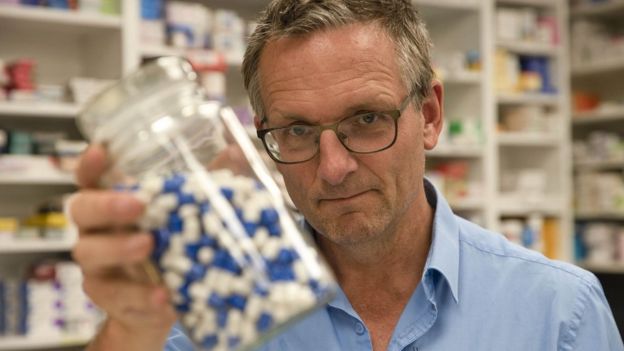This article was originally published on BBC.
We all know what it is to feel pain. Acute pain, that is, such as slamming your finger in the door or grazing your knee.
Chronic pain is different. It might be triggered by arthritis, an injury to your back or by an operation you never completely recover from.
According to the British Pain Society, chronic pain affects more than two-fifths of the adult population in the UK, meaning about 28 million adults are living with pain that has lasted for three months or longer.
And each year, according to a recent Public Health England report, about five million are prescribed opioids – painkillers that can be as powerful as Class A drugs.
In fact, the latest data suggests patients are being prescribed more than twice the amount of opioids they were 20 years ago.
There’s no doubt opioids have a vital role to play in cancer pain relief, end-of-life care or to alleviate pain after an operation. But that doesn’t begin to explain the surge in prescribing we’ve seen in recent years.
However – if you are taking opioids – you certainly shouldn’t stop without talking to your doctor.
Decades-old beliefs
So what are opioids? Originally, they came from the sap of the poppy plant – which has been used for thousands of years both recreationally and to treat pain.
Morphine and heroin are opioids. They act on the opioid receptors in the brain, blocking pain signals from the rest of the body.
In fact, they’re probably the greatest tool doctors have for numbing acute pain, such as a broken bone or an infected tooth.
The downside of long-term opioid use is it puts you at increased risk of constipation, memory loss, addiction – and even accidental death by overdose.

One reason for the massive rise in opioid prescribing is of a mistaken belief people in pain are very unlikely to become addicted. This is certainly what I was taught at medical school in the 1980s.
But according to Dr Jane Quinlan, consultant in pain management at Oxford University Hospitals Trust, this widespread belief was based on fallacies that took hold in the 80s.
“Two things happened,” she says. “One of them was that evidence came from palliative care, looking at patients at end-of-life and who had pain, to say that giving patients like that high-dose opioids was safe because they didn’t get addicted.
“Around the same time, a letter was published in the New England Journal of Medicine claiming that patients who were in hospital and given opioids for a short time rarely got addicted.”
This 100-word letter wasn’t peer-reviewed research – it was simply an observation.
But its tentative conclusions were inflated by pharmaceutical companies who began aggressively promoting opioid use as a safe and effective way to treat all manner of pain.
‘Red-hot poker’
Unfortunately, many patients soon discovered that isn’t true.
Karen, who in 2014 slipped a disc in her spine bending over to pick up a book, was one of them.
“It was like having a red-hot poker, put between your vertebrae,” she says. “Painful, very painful.”
Over the next five years, Karen was put on increasingly powerful opioids – starting with tramadol and ending up with morphine. But they failed to sort out the pain.
What they actually did, according to Karen’s husband, Ray, was turn “my beautiful, lovely, active wife into a zombie”.
 Image copyright GETTY IMAGES
Image copyright GETTY IMAGESKaren’s case is not unusual. GPs were encouraged, by national guidelines, to keep upping the dose until the patient was pain-free.
The trouble is, when it comes to chronic pain, opioids are often not that effective.
In fact, another leading pain expert, Dr Cathy Stannard, estimates fewer than one in 10 people given opioids for long-term pain will benefit from them.
They are also “dangerous and often expensive”, according to Dr Stannard, who recently reviewed the evidence on the benefits of long-term opioid use.
“They should be started only with caution and with upper dosing limits and continued only with demonstrably reduced pain – ideally to mild or no pain,” she says.
“If the opioid isn’t working after a decent trial – six weeks should be enough – it should be stopped.
“People already on opioids are often unsure if opioids are working or not but they are certainly still in a lot of pain.
“They should be encouraged to slowly and safely reduce the dose to get a better idea of how helpful the drug is for their pain.
“If I give you a drug for blood pressure and your blood pressure stays high, nobody would argue that it’s not working.
“But if I give you a painkiller and you come back saying, ‘I’m still in pain,’ what do we do? We double it.
“You come back and say, ‘I’m still in pain,’ and we double it again.
“If you give it and it doesn’t work, stop it. That’s what you’d do with any other drug, so why don’t we do that with opioids?”
The good news is GPs are increasingly aware of the dangers and there is now a big push to help patients on high-dose opioids reduce or even come off their medication.
That’s beginning to bear fruit – after 20 years of relentless growth, opioid prescribing has levelled off nationally.
And since 2017, in most places it’s actually begun to fall, though there remain big regional differences in levels of prescribing.
And there are alternatives for managing chronic pain.
For Karen, group therapy sessions and support from her family has enabled her to come off opioids. Now, she takes nothing stronger than paracetamol.
Horizon: Addicted to Painkillers? Britain’s Opioid Crisis is on BBC Two on Thursday, 16 January, at 21:00 and then available on BBC iPlayer.
